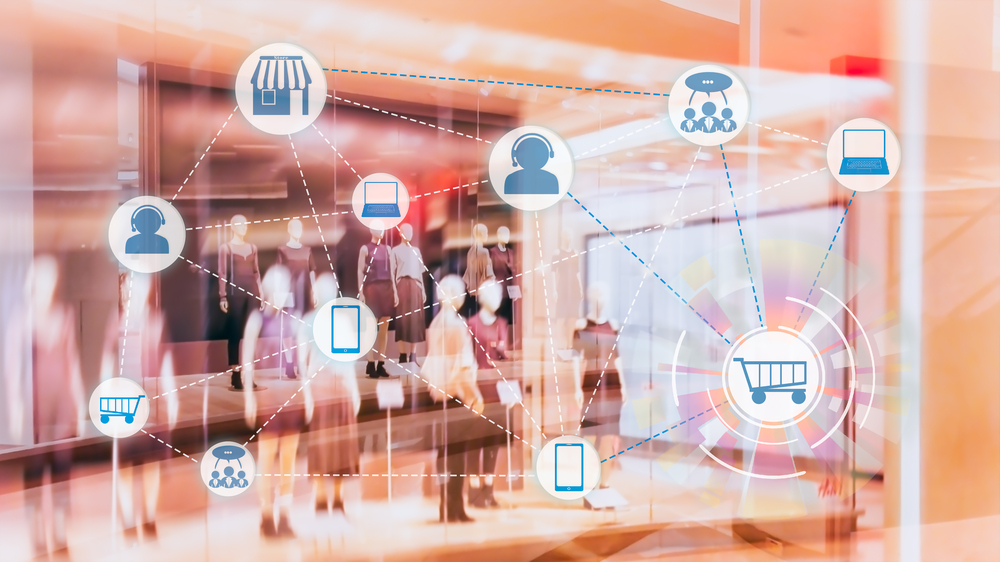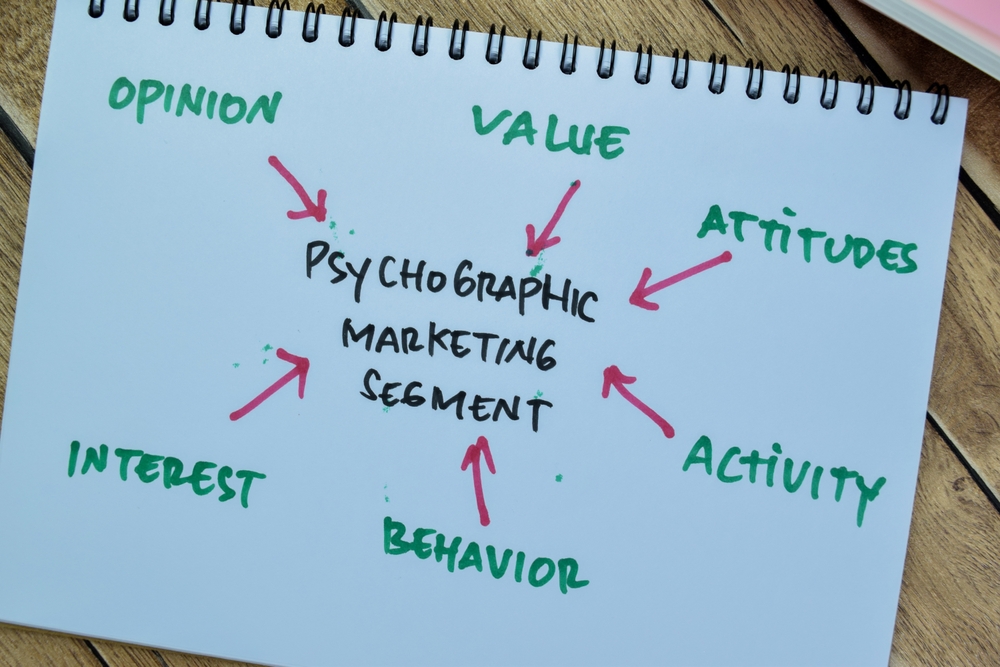You don’t build a home on a sandy foundation. Much in the same way, you don’t build an inbound marketing campaign without a rock-solid foundation. It all starts with buyer personas. Why? If you don’t know who you’re selling to, your campaigns are going to have a horrible ROI.
Read our easy, eight-step guide to building a buyer persona to make your inbound marketing campaigns hum.
What Is a Buyer Persona for Your Business?
A buyer persona is a semi-fictional archetype that embodies the key traits of your ideal customer. This crucial marketing tool is crafted from a combination of market research and insights gleaned from your existing customer base. It transcends simple demographic categories to include psychographics—beliefs, values, and motivations that drive purchasing decisions.
Don’t confuse a buyer persona with an ideal customer profile or ideal buyer persona. A buyer persona relates to the people who actually buy your produce or service. An ideal customer profile is the type of customer you want to attract. For our purposes, we are talking about the buyer persona and not the ideal one.
The goal of a detailed buyer persona is to create a nuanced understanding of what your customers really want, how they think, and the pathways they follow to make a purchase. This deep dive into the psyche of your target market enables the creation of tailored content and strategies that resonate on a personal level.
By focusing on the specific needs and desires of these personas, your business can fine-tune its offerings and communication, ensuring they strike a chord with the people most likely to convert. In essence, understanding and utilizing buyer personas allows for a more targeted, effective, and empathetic approach to marketing, laying the groundwork for stronger customer relationships and improved business outcomes.
And your marketing ROI will be much higher.

Now, on to our step-by-step guide!
1) Gather Initial Customer Data
Creating a compelling buyer persona begins with the vital step of gathering initial data. This process demands a meticulous approach, combining quantitative and qualitative research methods to paint a comprehensive picture of your existing and potential customers.
The first thing you can do is mine the data you already have on hand. Let’s say your favorite product is a simple cup of black coffee. You glean this information based on the frequent customer card you have, where people get a free cup of coffee after buying 10 of them. This data includes the customer’s contact information, but also the city they’re from. You can also tell when these customers make purchases because you note in your computer system when they punched their frequent customer cards and what they bought.
Another way to gather information is to deploy surveys. What’s the best way to get survey answers? Offer an incentive. It doesn’t have to be much. 10% off your next cup of coffee. Enter to win a $10 gift certificate. Free swag. The survey aims to capture the voice of the customer in their feedback.
Delve into the analytics of your website and social media platforms to uncover patterns and preferences in the content consumption of your audience. What pages or products are the most popular? What keywords do people use to find your website? How many people find your website organically, through direct traffic, or through other sources?
Additionally, harness the insights from your sales and customer service teams. Their direct interactions with customers can reveal underlying motivations, frequent inquiries, and feedback that are gold mines for persona development.
This stage is all about collecting diverse data sources to form a solid foundation for your buyer persona, ensuring the subsequent steps are informed by real-world insights and not mere assumptions.
2) Identify Customer Goals and Challenges
Beyond the actual data you have on customers, next, you dive into the reasons why your customers reach out to you. Is it the great coffee? Is it the customer service? A place to take a load off? Convenience of the location? Hours? Ambiance? Added flavors? Delicious cookies?
Diving into the heart of your audience’s motivations, this crucial step involves dissecting the data collected to pinpoint exactly what drives your customers. Are they looking to solve a specific problem, or are they in pursuit of achieving a particular goal?
Here, it’s essential to sift through the feedback, survey responses, and interaction data to identify recurring themes and patterns. Understanding these goals and challenges is not just about acknowledging their existence but about comprehensively grasping the emotional and practical hurdles your customers face.
This understanding forms the cornerstone of empathy in your marketing approach, allowing you to craft solutions and messages that truly speak to and resonate with your target audience. For example, your coffee shop sits on a major thoroughfare in town. Marketing messaging might say, “Need a quick cup on the way to the office? Stop by, and you’ll have your go juice in less than five minutes.”
By meticulously mapping out your customer goals and the challenges you solve, you’re able to tailor your marketing strategies to not only meet but exceed customer expectations, setting the stage for deeper engagement and loyalty. Customer goals and challenges may change over time, so remember that a buyer persona is not just a static profile but a dynamic representation of your ideal customer’s evolving needs and aspirations.

3) Delve Into the Psychographics of Your Buyer Persona
Unlocking the deeper dimensions of your target audience involves a thorough exploration of psychographics, which goes beyond surface-level demographics to tap into the core values, interests, attitudes, and lifestyle choices that drive customer behavior. This rich tapestry of psychological insights is pivotal for crafting messages that genuinely resonate with your audience. We call these empathetic engagement strategies, ensuring your brand narrative speaks directly to the intrinsic motivations and aspirations of your customers.
By integrating psychographic analysis into our buyer persona development process, we empower your business to connect on a more personal and emotional level, fostering a brand experience that aligns with the unique worldview and values of your target market. This approach not only elevates your marketing efforts but also enriches the customer journey, creating a deeper sense of loyalty and brand affinity.
Back to the coffee shop analogy. If your target audience grabs their favorite coffee on the way to the office, a winning marketing push might be “Win Every Monday Morning Meeting.” You’re connecting your product to someone having more energy on the way to the office because they drink your coffee. Your coffee is a physical product worth $2 a cup, but the emotional impact of an employee smiling because they knocked a presentation out of the park is priceless.
4) Craft the Buyer Persona’s Story
After diligently gathering and analyzing your target audience data, it’s time to transform this information into a compelling narrative. This step is where creativity meets strategy.
Begin by assigning your persona a name that encapsulates their essence. Sketch out a day in their life, incorporating their job role, family dynamics, and hobbies, ensuring these elements are deeply interwoven with the goals, challenges, and psychographics previously identified. Picture their morning routines, the challenges they face at work, and how they spend their leisure time. This narrative serves a crucial purpose. It humanizes the data, transforming numbers and patterns into a relatable character your marketing team can envision and empathize with.
As you craft this story, remember to focus on the emotional and psychological underpinnings that drive their decisions. This detailed story does more than just describe a customer. It brings them to life, making it easier for your team to make deeply resonant and personalized marketing strategies tailored to the real needs and desires of your audience.
5) Utilize the Buyer Persona in Inbound Marketing
With the buyer persona as your compass, inbound marketing becomes a strategic endeavor meticulously tailored to engage and captivate your defined audience. The essence of leveraging a buyer persona in this domain lies in its ability to dictate the nuances of your content creation, from short videos and menu photos to blog posts and email campaigns, ensuring each piece is crafted with the persona’s preferences, pain points, and platforms of choice in mind. This persona-driven approach extends to social media, where understanding the digital habitats of your target audience allows for precision in the dissemination of your message, ensuring it lands in front of eyes that are not just seeing the marketing efforts but also interested and engaged with them.
Furthermore, the tone of voice, a critical element in communication, is fine-tuned to mirror the persona’s language and emotional drivers, fostering a connection that feels both authentic and personalized. Implementing the buyer persona in your inbound marketing strategies ensures that your efforts are not scattered but sharply focused, significantly bolstering your chances of not just reaching but resonating with your intended audience. You effectively turn prospects into loyal customers.
6) Evaluate and Refine Your Buyer Persona
The dynamic landscape of consumer behavior necessitates a proactive approach to maintaining the accuracy and relevance of your buyer persona. Regular assessments are vital, driven by a commitment to align marketing strategies with the evolving needs and expectations of your audience.
Incorporate feedback mechanisms into your marketing campaigns and closely monitor engagement metrics to identify shifts in consumer attitudes or behaviors. Analyze sales trends and customer feedback for insights that could signal a need for persona adjustments. Look over what pieces of content get the most clicks or views. See what products or services are the most popular with your audience. You might see seasonal fluctuations in your sales. Coffee shops might see a spike in pumpkin spice lattes in October and November, while gingerbread or peppermint could see more sales in December. Then strawberry flavors are popular in February for Valentine’s Day.
Engaging in this ongoing process of evaluation ensures your persona evolves in tandem with your target market, maintaining its effectiveness as a cornerstone of your marketing efforts. This iterative refinement process empowers your strategies to remain agile, responsive, and, most importantly, impactful. It’s about embracing change and using it to fine-tune your approach, ensuring your marketing continues to resonate deeply with your audience. It’s more important to alter your strategies to your customer base rather than trying to force your customers to buy something they don’t need. You’ll foster stronger connections and, more importantly, drive sustained growth by catering to your loyal customers while appealing to a new audience.

7) Implement and Share Across Your Organization
The success of a buyer persona extends far beyond the confines of the marketing team. It’s imperative to share critical insights with as many team members as needed. Your marketing team knows that your chai will be a big seller in January. But do your front-end staff know that? If they do, they’ll be more likely to suggest things that complement chai, such as spiced cookies with cinnamon, ginger, and cloves.
Sales, product development, and customer service teams can all benefit from an in-depth understanding of the buyer persona. You’ll get a cohesive strategy that aligns with customer needs at every touchpoint. By encouraging this cross-departmental teamwork, you’ll guarantee that every interaction with the customer is informed by a unified vision.
This collaborative approach not only amplifies the impact of your marketing efforts but also enriches the customer experience, driving satisfaction, loyalty, and growth. Implementing the buyer persona across your organization empowers each team member to contribute more effectively to the company’s overarching goals while meeting happy customers at every turn.
8) Craft as Many Buyer Personas That Make Sense
Don’t stop at just one buyer persona. The same upper-management guy in his mid-50s who buys a plain cup of coffee on the way to work may not have the same motivations as a new college graduate in her early 20s just starting her new job. However, if both of these types of people make up a large aspect of your target audience, you’ll need to create emotional messaging that speaks to both buyer personas.
Ready for Some Data-Driven Inbound Marketing?
Our coffee shop analogy is just one example of a company with buyer personas. When we help your business develop buyer personas, we’ll speak to your unique situation and your audience’s needs.
BigPxl can help you build an inbound marketing campaign the right way from Day One. Contact us or call (417) 799-2233 for details.





